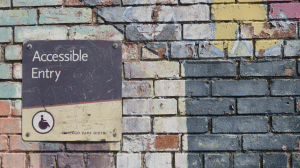Imagine a bunch of startup entrepreneurs and innovation hub managers sitting together with government representatives to develop recommendations for an innovation policy framework. Sounds like utopia? Far from it! This was actually happening last year in Rwanda and Nigeria with the i4policy hackathon– a method developed by the Global Innovation Gathering, a network of innovation hubs worldwide. The i4policy hackathon is one of the best examples how the future of development looks like: collaborative, open and people-driven.
The Sustainable Development Goals highlight multistakeholder-partnerships as an important vehicle to mobilize and share knowledge, expertise, technologies and financial resources to fast forward progress on the SDGs. Exploring new concepts for public, public-private and civil society partnerships is thus one of the major tasks for a future-orientated, effective development cooperation. One of the concepts Deutsche Gesellschaft für Internationale Zusammenarbeit (GIZ) is starting to explore together with the Impact Hub Network is the idea of “collaborative innovation”.
Borrowed from the private sector, this approach moves innovation-focused collaborations between young, dynamic players and governmental institutions into the spotlight. It is the aim of these collaborations to make governments more responsive and open for ideas from the outside and to include a diverse set of stakeholders in the development of new services or policies. At the same time, these collaborations can help small and innovative players to realize their ideas and eventually even scale them. Commonly, approaches such as these are referred to as “public sector innovation” with the UK and the Scandinavian countries leading the pack but others such as the Ukraine and Indonesia joining in. One of the starting points to reach this goal: innovation challenges, which call for the best solutions to a problem. With it, governments bring flexibility into the procurement process and invite organizations beyond the usual suspects to submit their ideas. In an ideal setting, this is embedded in an open innovation 2.0 approach bringing together not only governments and private sector, but also include academia and civil society in developing and testing an intervention.
In a future, international development actors will no longer just be acting as implementing organizations advising partner governments or – at the worst – parachuting in with a new project. Rather, they see themselves as matchmakers who are able to bring the right people to the table and build bridges. It requires the ability to navigate both the policy sphere of governmental bodies and the startup ecosystem – and in this sense, to connect unlikely allies to bring about the change we want to see: human-centered, efficient, inclusive of all.
About the authors:
Lea and Christian are both senior experts and partnership managers in GIZ’s competence center “Digital Society”. The article reflects the personal opinion of the authors.
Twitter: @Gimpelle






